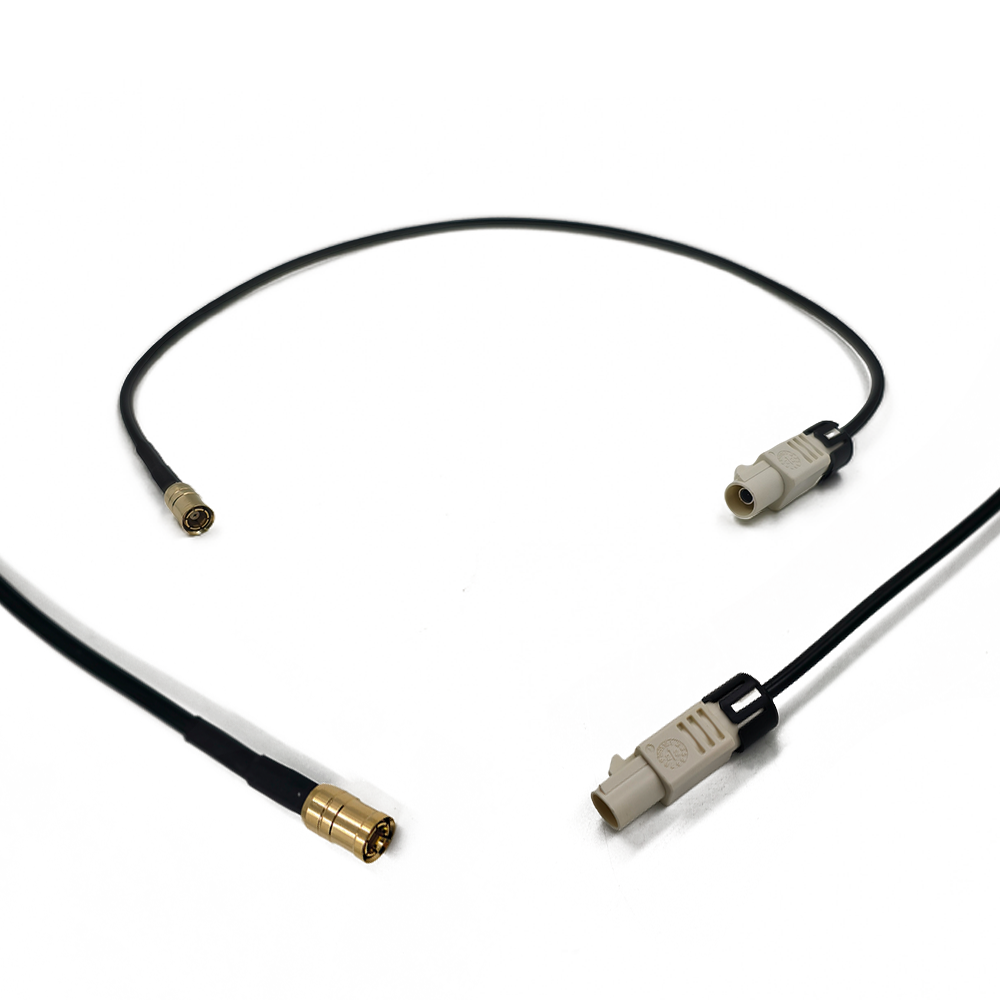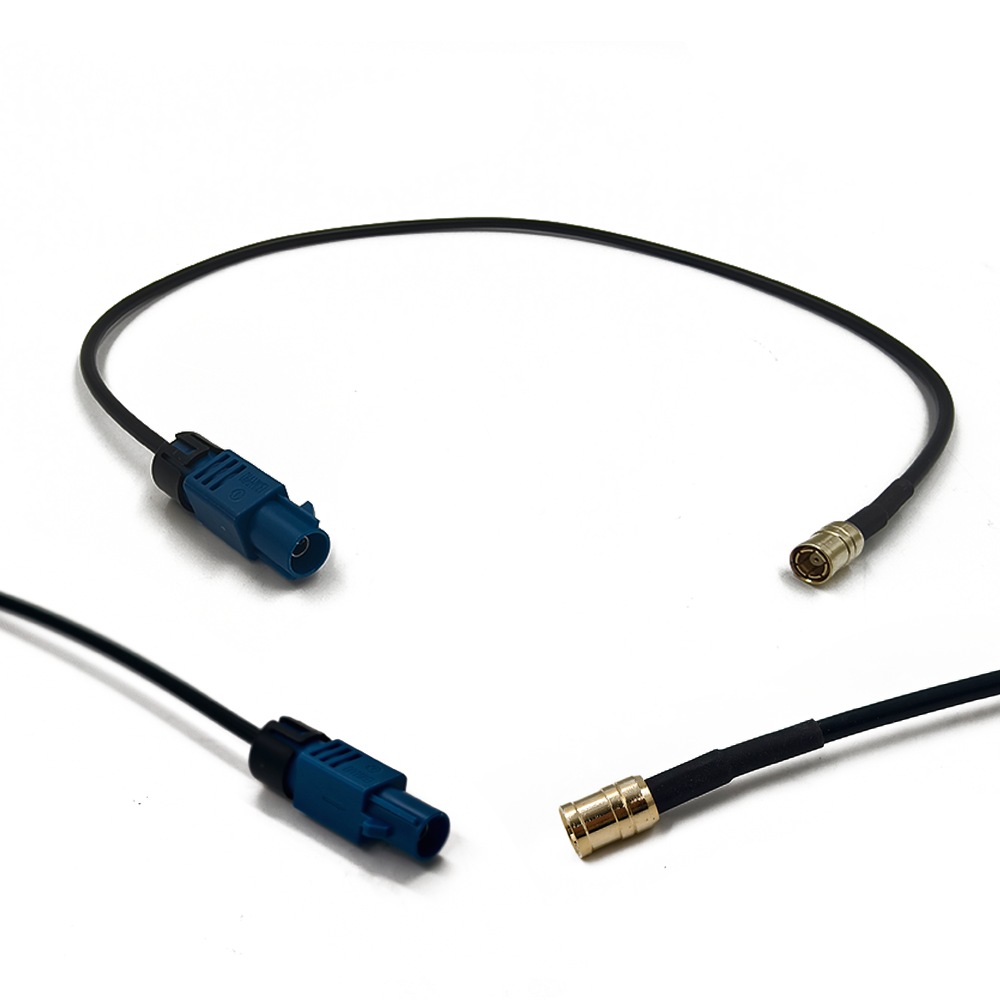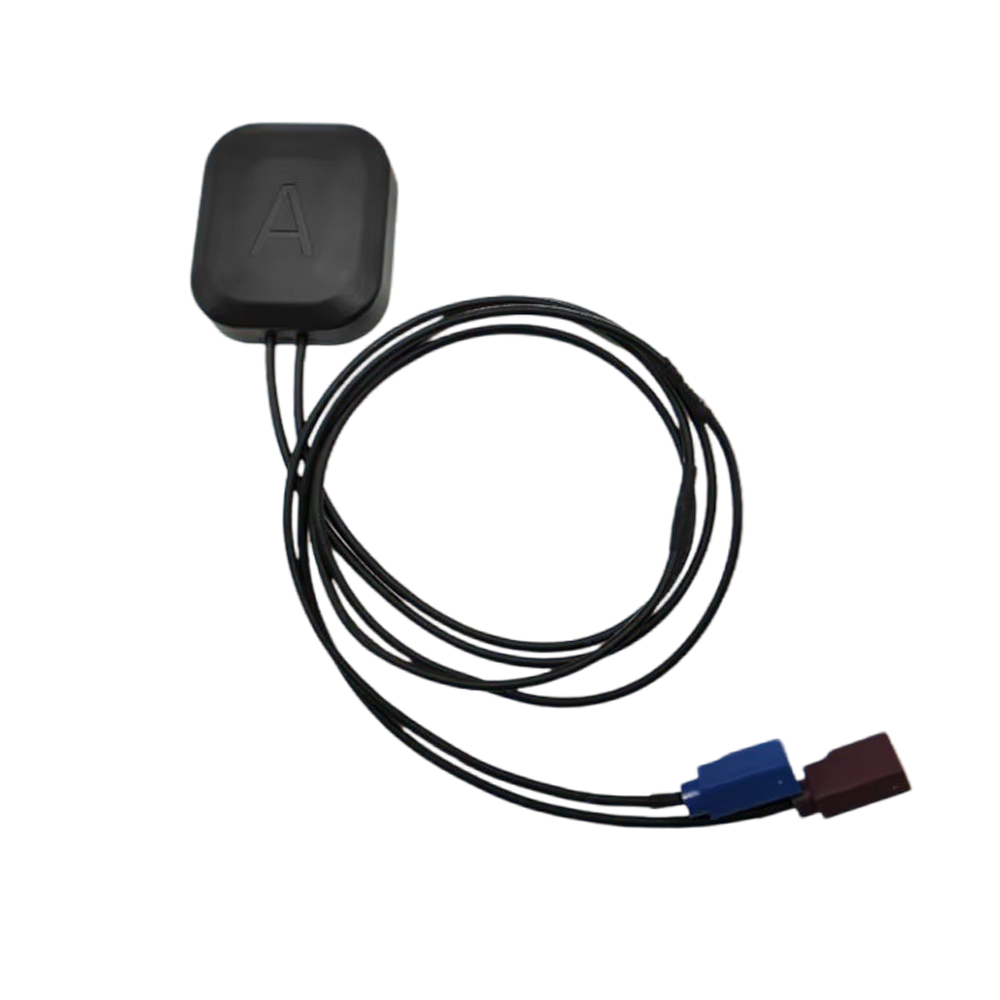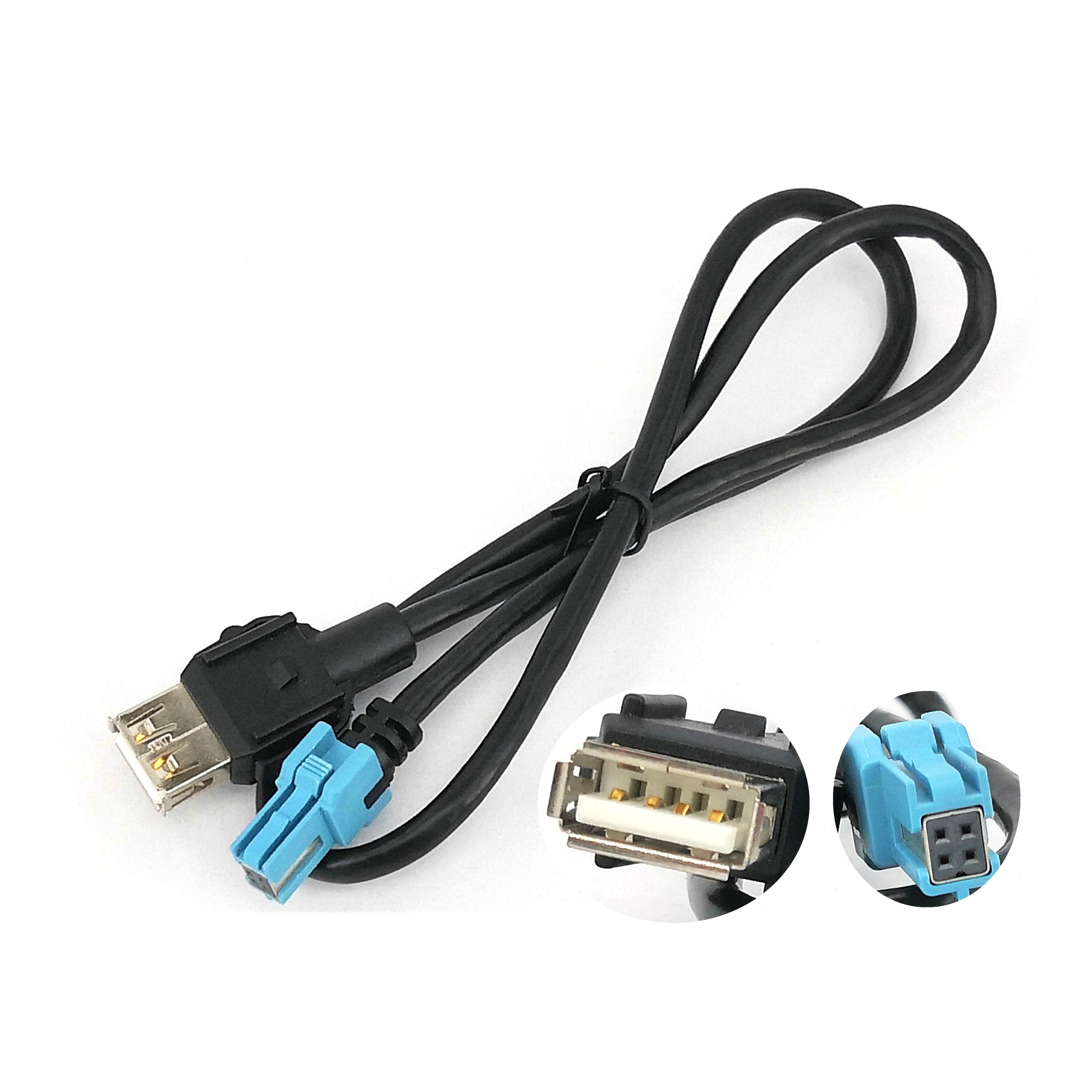Vehicle Tracking FAKRA GPS Antenna Solutions are deployed across a diverse range of industries, where reliable, accurate vehicle tracking is essential for operational efficiency, safety, and compliance. From managing commercial fleets to enabling emergency services, these solutions have become a foundational component of modern mobility. As automotive technology evolves—driven by the rise of connected cars, electric vehicles (EVs), and autonomous driving—new trends are emerging that will expand the capabilities and applications of FAKRA GPS antennas. This section explores the current use cases of these solutions and the key trends shaping their future.
Current Applications
Commercial Fleet Management
The largest application of Vehicle Tracking FAKRA GPS Antenna Solutions is in commercial fleet management—including trucks, vans, delivery vehicles, and buses. Fleet operators use these antennas to monitor real-time vehicle location, route efficiency, driver behavior (e.g., speeding, harsh braking), and fuel consumption. For example, a logistics company operating a fleet of delivery vans can use FAKRA GPS antennas to optimize routes, ensuring that drivers take the shortest path to their destinations and avoid traffic congestion—reducing fuel costs by 10–15%. The antenna’s durability is critical here: delivery vans often operate in urban environments with low-hanging branches and tight parking spaces, and the IP6K9K-rated housing protects the antenna from damage. Additionally, FAKRA compliance allows the antenna to integrate seamlessly with fleet management software (e.g., Verizon Connect, Geotab), which collects and analyzes tracking data to generate reports on fleet performance.
Stolen Vehicle Recovery (SVR)
Law enforcement agencies and automotive manufacturers rely on Vehicle Tracking FAKRA GPS Antenna Solutions for stolen vehicle recovery. These antennas are integrated into the vehicle’s TCU, which transmits real-time location data to a remote server if the vehicle is stolen. The antenna’s ability to capture signals in challenging conditions—e.g., urban canyons, parking garages, or areas with dense foliage—ensures that the stolen vehicle can be tracked even if the thief attempts to hide it. For example, luxury car manufacturers like BMW and Mercedes-Benz use FAKRA GPS antennas in their vehicles, enabling their SVR services to locate stolen cars within minutes. The FAKRA connector’s secure locking mechanism prevents thieves from easily disconnecting the antenna, while the EMI shielding ensures that the signal is not jammed by cheap GPS jammers (a common tool used by car thieves).
Emergency Services and Public Safety
Emergency services—including police, fire, and ambulance fleets—use Vehicle Tracking FAKRA GPS Antenna Solutions to optimize response times and ensure the safety of personnel. Ambulances, for example, use these antennas to navigate to emergency scenes via the fastest route, avoiding traffic and road closures. The antenna’s real-time tracking capabilities also allow dispatch centers to monitor the location of all emergency vehicles, ensuring that the closest unit is sent to each call. In fire services, FAKRA GPS antennas are used to track fire trucks operating in remote areas (e.g., wildland fires), where cellular coverage may be limited. The antenna’s durability is critical in these environments: fire trucks are exposed to high temperatures, water, and debris, and the IP6K9K housing and heat-resistant materials ensure the antenna remains functional.
Construction and Heavy Equipment Tracking
Construction companies use Vehicle Tracking FAKRA GPS Antenna Solutions to monitor the location and usage of heavy equipment—including excavators, bulldozers, cranes, and loaders. These antennas are mounted on the equipment’s cab or roof, providing real-time tracking data that helps companies prevent theft, optimize equipment utilization, and monitor maintenance schedules. For example, a construction company with a fleet of excavators can use FAKRA GPS antennas to ensure that each machine is used efficiently (e.g., not left idle for extended periods) and to schedule maintenance based on usage hours (e.g., oil changes every 500 hours). The antenna’s resistance to vibration and harsh weather (e.g., rain, dust, extreme temperatures) is essential for construction sites, where equipment operates in challenging conditions. Additionally, FAKRA compliance allows the antenna to integrate with construction management software, which generates reports on equipment productivity and cost.
Electric Vehicle (EV) Fleet Management
As EV adoption grows, Vehicle Tracking FAKRA GPS Antenna Solutions are becoming increasingly important for EV fleet management. These antennas not only track the vehicle’s location but also integrate with the EV’s battery management system (BMS) to monitor battery status (e.g., charge level, temperature, and health). For example, a ride-sharing company operating a fleet of EVs can use FAKRA GPS antennas to track each vehicle’s location and battery charge, ensuring that drivers are directed to charging stations when the battery level drops below 20%. The antenna’s multi-band support (L1 and L5) is critical for EVs, as the large battery packs can interfere with GPS signals— the L5 band’s better resistance to interference ensures accurate tracking even in EVs. Additionally, FAKRA compliance allows the antenna to work with EV-specific telematics systems, which provide insights into energy consumption and charging patterns.
Future Trends
Multi-Constellation and Multi-Band Support
A key future trend for Vehicle Tracking FAKRA GPS Antenna Solutions is the shift toward supporting multiple GNSS constellations (GPS, Galileo, BeiDou, GLONASS) and frequency bands (L1, L2, L5). Multi-constellation support ensures that the antenna can capture signals from more satellites, improving tracking accuracy and reliability in challenging environments (e.g., urban canyons, indoor parking garages). For example, a FAKRA antenna supporting GPS, Galileo, and BeiDou can capture signals from up to 30 satellites at once—compared to 12–15 for a single-constellation antenna—reducing the risk of signal loss. Multi-band support (especially L5) is equally important: the L5 band (1176.45 MHz) offers better resistance to interference, atmospheric errors, and signal blockage than L1, making it ideal for EVs, autonomous vehicles, and high-precision tracking applications. Manufacturers are already developing FAKRA antennas with multi-constellation/multi-band capabilities, and this trend will accelerate as regulatory mandates (e.g., EU requirements for Galileo support in automotive systems) become more widespread.
Integration with 5G and V2X Communication
The integration of FAKRA GPS antennas with 5G and Vehicle-to-Everything (V2X) communication systems is another major trend. 5G networks offer high-speed, low-latency data transmission, which is critical for real-time vehicle tracking and V2X applications (e.g., vehicle-to-vehicle, vehicle-to-infrastructure, and vehicle-to-pedestrian communication). A FAKRA GPS antenna paired with a 5G module can transmit location data to a remote server in milliseconds, enabling fleet operators to make real-time decisions (e.g., rerouting a vehicle to avoid an accident). V2X communication relies on precise location data to ensure safety—for example, a vehicle approaching a construction zone can receive a warning from nearby infrastructure, and the FAKRA antenna’s accurate location data ensures that the warning is triggered at the correct time. Manufacturers are developing hybrid FAKRA antennas that combine GPS, 5G, and V2X capabilities in a single unit, reducing size, weight, and cost for automotive applications.
AI-Powered Signal Optimization
Artificial intelligence (AI) and machine learning (ML) will play an increasingly important role in optimizing the performance of Vehicle Tracking FAKRA GPS Antenna Solutions. AI algorithms can analyze real-time signal data (e.g., strength, noise levels, satellite visibility) and adjust the antenna’s parameters (e.g., radiation pattern, band selection, and LNA gain) to maximize performance. For example, in an urban canyon, the AI can detect that most GPS signals are coming from the north and adjust the antenna’s radiation pattern to focus on that direction—improving signal strength by 3–5 dB. ML algorithms can also learn from historical data, predicting which parameters will work best in specific environments (e.g., heavy rain, dense foliage) and adapting automatically. This will reduce the need for manual adjustments by fleet technicians and improve tracking accuracy in challenging conditions. Additionally, AI can be used to monitor the antenna’s health (e.g., detecting cable degradation or connector wear) and alert fleet operators to potential issues before they cause failure.
Miniaturization and Discreet Mounting
As automotive designs become more sleek and aerodynamic, there is a growing demand for miniaturized Vehicle Tracking FAKRA GPS Antennas that can be mounted discreetly. Manufacturers are using advanced materials (e.g., thin-film ceramics for the antenna element, micro-LNAs) to reduce the size of FAKRA antennas—current models are as small as 30mm x 30mm x 5mm, and future models will be even smaller. Discreet mounting options (e.g., integrating the antenna into the vehicle’s windshield, rearview mirror, or roof trim) are also becoming more common, as fleet operators and vehicle owners prefer to avoid visible roof-mounted antennas (which can be damaged or attract theft). Miniaturization does not compromise performance: advanced design techniques (e.g., fractal antenna patterns) ensure that small FAKRA antennas maintain the same gain and signal capture capabilities as larger models.
Sustainability and Eco-Friendly Design
Sustainability is a growing trend in the automotive industry, and Vehicle Tracking FAKRA GPS Antenna Solutions are no exception. Manufacturers are developing eco-friendly antennas using recycled materials (e.g., recycled plastic for the housing, recycled copper for the cable core) and biodegradable components (e.g., plant-based adhesives for mounting). Additionally, modular designs are becoming more common—allowing users to replace damaged components (e.g., cables, connectors) instead of the entire antenna, reducing electronic waste. For example, a modular FAKRA antenna with a replaceable cable can extend the antenna’s lifespan by 2–3 years, as the cable (which is prone to wear) can be swapped out without replacing the entire unit. Manufacturers are also reducing the energy consumption of FAKRA antennas—new LNA designs use 30% less power than older models, which is critical for EVs where energy efficiency is a priority.
Conclusion
Vehicle Tracking FAKRA GPS Antenna Solutions have established themselves as a critical technology in the modern automotive and fleet management ecosystems, addressing the unique challenges of reliable, accurate vehicle tracking in harsh environments. Throughout this analysis, we have explored how these solutions—with their automotive-grade durability, FAKRA compliance, and superior signal performance—meet the diverse needs of industries ranging from commercial fleet management to emergency services. From their robust design and construction to their seamless integration with vehicle systems, FAKRA GPS antennas have redefined what is possible in terms of tracking reliability and compatibility.
The overview section set the stage by highlighting the importance of FAKRA standards in addressing automotive-specific limitations of generic GPS antennas. The design and construction segment detailed the meticulous engineering choices—from vibration-resistant mounting to EMI shielding—that ensure these antennas withstand the rigors of automotive operation. The working principles explained how the antenna captures, amplifies, and transmits GPS signals, integrating with TCUs to deliver precise




































































 Language
Language
 En
En Cn
Cn Korean
Korean

 Home >
Home > 








 18665803017 (Macro)
18665803017 (Macro)













